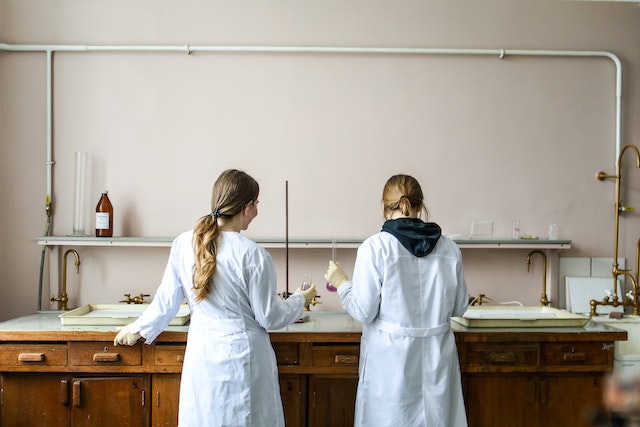6 Practices to Follow When Handling Cell Culture
Cell culture has become an essential tool of biomedical research and biotechnology, revolutionizing our understanding of cellular behavior, disease mechanisms, and drug development.
Its delicate nature requires meticulous handling to guarantee accurate and repeatable results.
Advancements in 3D culture technologies and the increasing adoption of biopharmaceutical production, tissue engineering applications, and drug discovery are expected to boost the industry’s growth.
In fact, it is estimated that the global cell culture market will reach over 33 billion dollars by 2030.
In this blog post, we will delve into six essential practices that form the bedrock of successful cell culture techniques.
Whether you’re a seasoned researcher or a novice in the field, these practices will empower you to maintain healthy and thriving cell lines while achieving reliable outcomes.
What Will We Learn?
The Aseptic Technique
Maintaining sterility throughout the cell culture process is paramount.
Contaminants, ranging from bacteria and fungi to other cell lines, can compromise experimental integrity.
Adhering to aseptic techniques by using proper attire, sterile equipment, and a controlled environment, ensures that the culture remains free from unwanted microorganisms.
Regularly disinfecting the workspace, using laminar flow hoods, and employing sterile media and solutions are essential practices that safeguard your cultures and the validity of your experiments.
While the aseptic technique sets the stage for contamination-free cell culture, the use of innovative instruments like single cell dispensers introduces a new level of precision.
These advanced instruments, often leveraging microfluidic technology, allow researchers to dispense individual cells with unparalleled accuracy.
In traditional cell culture techniques, cells are typically seeded in bulk, leading to a degree of variability in cell density and behavior.
Single-cell dispensers offer the unique ability to isolate and place individual cells precisely where needed, enhancing consistency and control over experiments.
Selecting Appropriate Culture Conditions
Selecting the appropriate culture conditions is a pivotal factor in nurturing successful cell cultures. Each cell type possesses its unique preferences for growth, encompassing temperature, pH, and CO2 levels. This crucial phase demands meticulous research and analysis to ascertain the optimal conditions tailored to your specific cell line.
The significance of this undertaking cannot be overstated, as it forms the bedrock upon which the entire culture experiment stands.
Consistency in maintaining these conditions holds the key to preventing stress-induced shifts in cellular behavior, thereby securing consistent growth, viability, and functionality.
As custodians of these delicate microenvironments, researchers bear the responsibility of regularly monitoring and finely tuning these parameters.
This vigilance is essential in creating an environment that not only sustains healthy cell growth but also serves as a sanctuary for intricate cellular processes.
By nurturing these conditions, researchers enable cells to thrive, paving the way for robust experimental results and contributing to the advancement of scientific understanding.
Effective Media Preparation and Handling
Cell culture media provide the nutrients, growth factors, and energy required for cell proliferation.
Precise preparation and handling of media are crucial to ensure cell health.
Always follow established protocols for media preparation, using a sterile technique to avoid contamination.
Additionally, make sure to store media and supplements properly, protecting them from light and temperature fluctuations that can degrade their quality.
Regularly replenishing media and removing waste products help maintain optimal conditions for cell growth.
Routine Passage and Subculture Techniques

As cell populations expand, regular passage and subculture are necessary to prevent overcrowding, maintain exponential growth, and prevent cell differentiation.
When performing passage, be gentle to minimize cell stress and trauma.
Use appropriate trypsinization protocols to detach cells from the culture vessel and ensure complete dissociation.
Seed new cultures at appropriate densities to prevent overgrowth or depletion of nutrients. Regularly validate cell identity and authenticity to avoid cross-contamination and maintain accurate experimental outcomes.
Monitoring Cell Health And Viability
Continuous monitoring of cell health and viability is essential for successful cell culture.
Periodically check cultures under a microscope to assess their morphology and detect any signs of stress, contamination, or differentiation.
Viability assays, such as trypan blue exclusion or fluorescent dyes, help determine the percentage of viable cells in a culture.
Early detection of issues allows for timely intervention, ensuring that your cell lines remain robust and reliable.
Safety And Ethical Considerations
Ethical considerations and biosafety protocols play an important role in cell culture practices.
Make sure you adhere to institutional guidelines and regulations for the use of human or animal-derived cell lines.
In addition, handle potentially hazardous materials such as biohazardous agents or genetically modified cells, following stringent safety measures.
Proper disposal of waste materials and decontamination procedures are imperative to safeguard both laboratory personnel and the environment.
In Closing
In the intricate world of cell culture, precision and adherence to best practices are indispensable.
These six practices, ranging from aseptic technique and culture condition optimization to vigilant monitoring and ethical considerations, collectively pave the way for successful cell culture experiments.
By mastering these foundational principles, researchers and scientists can ensure reliable, reproducible, and meaningful results in their pursuit of advancing scientific knowledge, therapeutic development, and the betterment of human health.
As the realm of cellular research continues to evolve, these practices remain steadfast pillars in the quest for scientific excellence and innovation.
See also: Navigating Your Nursing Career
